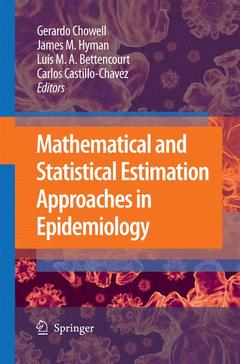Mathematical and Statistical Estimation Approaches in Epidemiology, 2009
Coordonnateurs : Chowell Gerardo, Hayman James M., Bettencourt Luís M. A., Castillo-Chavez Carlos

Gerardo Chowell is an associate professor and a Second Century Initiative Scholar (2CI) in the School of Public Health at Georgia State University in Atlanta. His research program includes the development and application of quantitative approaches for understanding the transmission dynamics and control of infectious diseases including influenza, Ebola, and dengue fever. His work has appeared in high-impact journals including The New England Journal of Medicine, PLOS Medicine, and BMC Medicine, andhas been cited by major media outlets including the Washington Post and TIME magazine.
James (Mac) Hyman has developed and analyzed mathematical models for the transmission of HIV/AIDs, influenza, malaria, dengue fever, chikungunya, and infections. His current focus is to identify approaches where these models can help public health workers be more effective in mitigating the impact of emerging diseases. He was a research scientist at Los Alamos National Laboratory for over thirty years, is a past president of the Society for Industrial and Applied Mathematics (SIAM), and now holds the Phillips Distinguished Chair in Mathematics at Tulane University.
Date de parution : 11-2014
Ouvrage de 363 p.
15.5x23.5 cm
Date de parution : 06-2009
Ouvrage de 363 p.
15.5x23.5 cm



